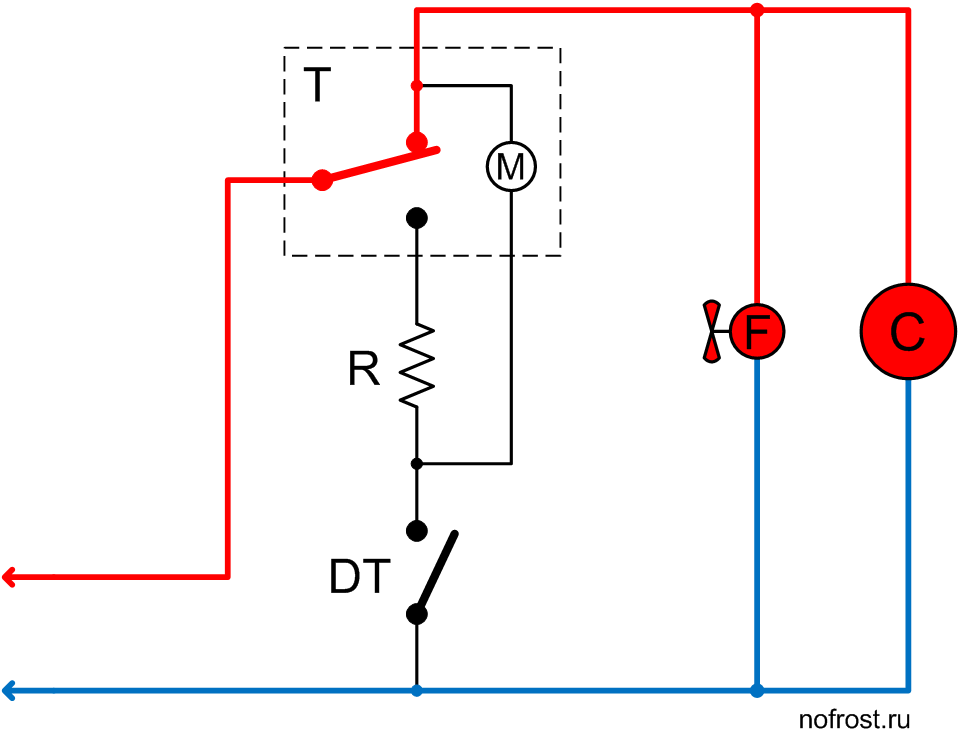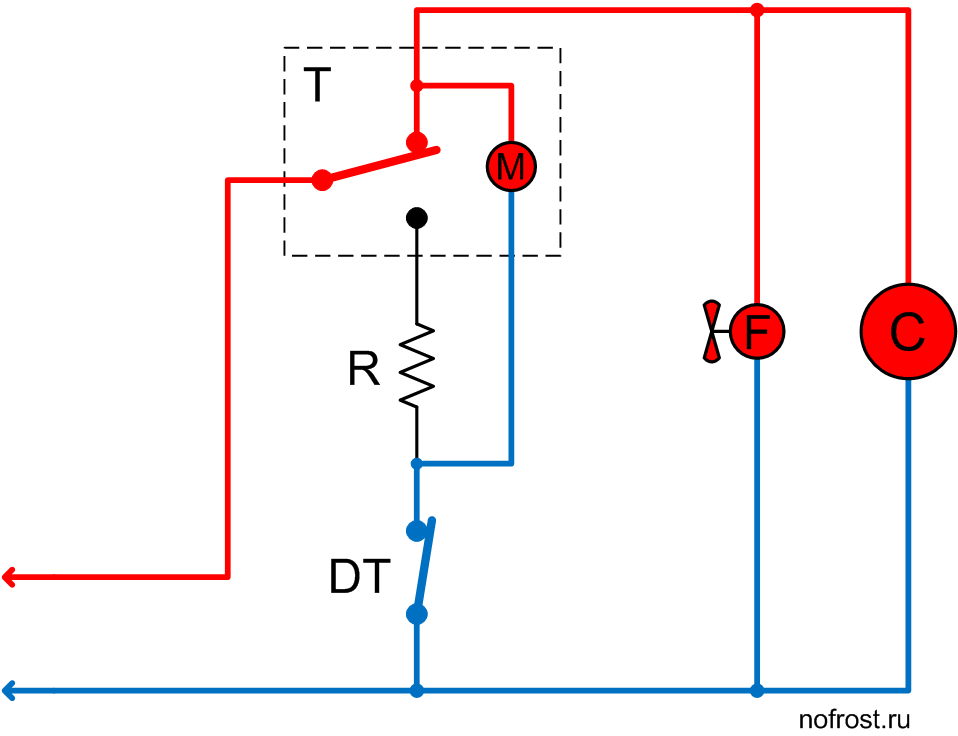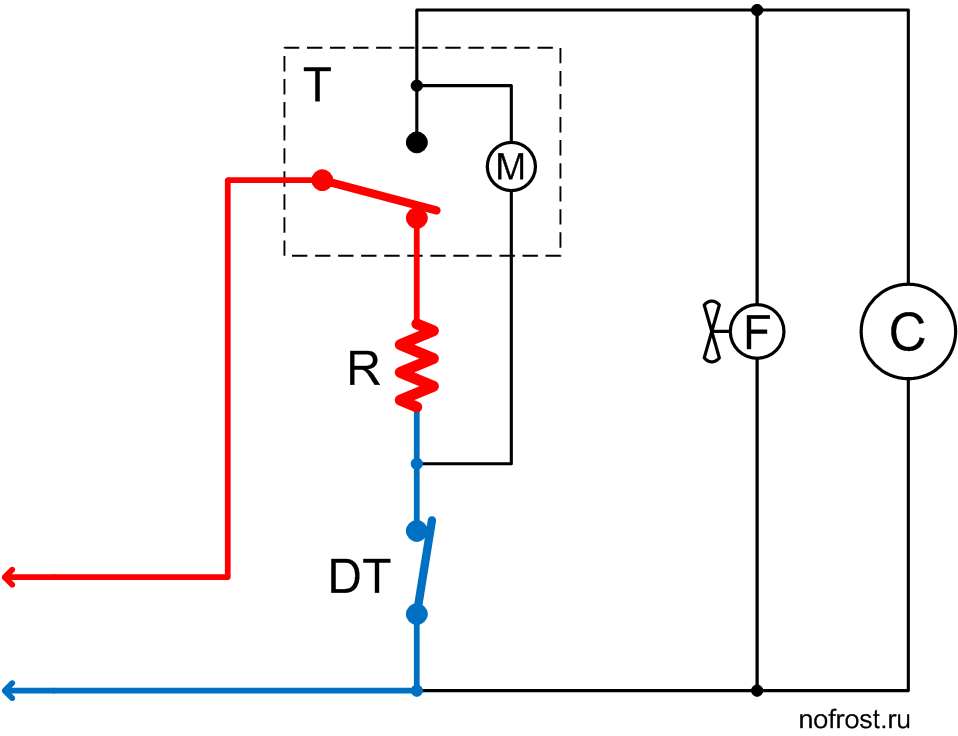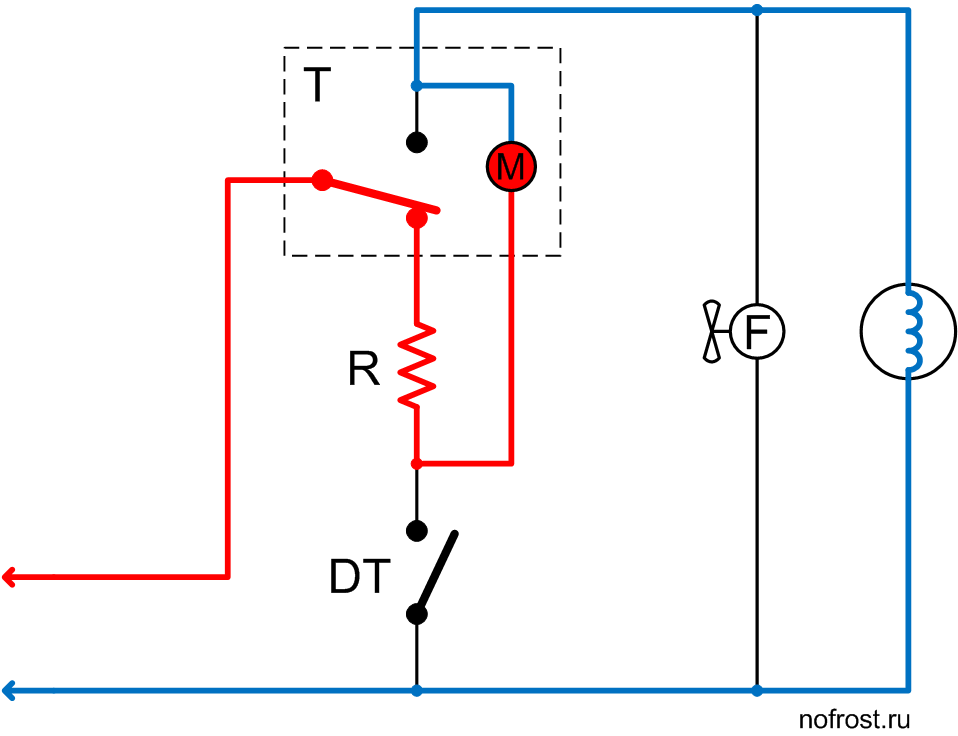Alternative feedback circuit
The circuit of timer motor power supply after opening of the defrost thermostat contacts is also different from the standard one.
Designations
M - timer motor
The electromechanical timer operating principle is based on rotation of the shaped drum sequencer by the micromotor. The drum periodically switches over the timer contacts. Thus, time is counted down only when the micromotor is powered.C - compressor
The refrigeration unit operating principle is based on physical processes in its pipelines during coolant circulation in them. Circulation is provided by refrigeration unit compressor. Its operation causes intense cooling of the refrigeration unit evaporator.F - fan
Heat exchange between the refrigeration unit evaporator surface and food products inside the refrigerator is provided by the air flow created by the No Frost system fan.R - defrost heater
The moisture in the air, blowing down the intensely cooled evaporator of the No Frost system, gradually settles on its surface as frost. The heater, attached on the evaporator, assures its heating for frost melting and surface cleaning. It is needed to prevent formation of an excessively thick frost layer, impairing effectiveness of heat exchange between the evaporator and air flow.DT - defrost thermostat
Temperature of the No Frost system evaporator must be monitored during automatic defrost, so as to switch off the heater in time. The defrost thermostat is used for temperature monitoring. Its contacts open at a temperature slightly above the frost melting temperature.Interactive Circuit Diagram




The system is in the mode of initial rapid cooling, the timer supplies power to the compressor and fan. However, the evaporator hasn’t yet cooled down sufficiently, that’s why the defrost thermostat contacts are open and the timer motor is de-energized.
The system operates in this mode not long, about 10 minutes. Usually this time is enough for sufficient cooling of the evaporator and closing of the defrost thermostat contacts.
The system is in the cooling mode, the timer supplies power to the compressor and fan. The evaporator has already cooled down sufficiently, that’s why the defrost thermostat contacts are closed, and power is supplied to the timer motor.
The system operates for most of the time in this mode. Its duration is from 6 to 12 hours. Air and food products inside the refrigerator are cooled in this mode, while the evaporator is gradually covered with a frost layer.
The system has set to the defrost mode. The timer de-energized the compressor and fan and powered up the defrost heater. Evaporator temperature is low as yet, that’s why the defrost thermostat contacts are closed.
Note that the timer motor is de-energized while the defrost thermostat contacts are closed. This is feedback in action.
Duration of operation in this mode depends on evaporator frost amount and is usually 10...15 minutes. In this time, the heater melts all the frost on the evaporator surface.
The heater warmed up the evaporator to above the frost melting temperature and the defrost thermostat contacts opened, de-energizing the heater. The timer is still in the defrost mode, but its motor is now powered, therefore it will switch over its contacts after a while and set to the rapid cooling mode.
In this mode, the timer is powered indirectly, via the heater and the compressor winding. It is possible due to extremely low resistance of the heater and the compressor winding as compared to timer motor resistance.
Duration of operation in this mode depends on timer model and is usually from 1 to 7 minutes.
Conclusion
From the technical viewpoint, the advantage of this circuit as compared to the standard feedback variant is that the timer motor is powered directly from the power source (and not from the defrost heater as in the standard variant) while the system is in the cooling mode. It provides energy saving by prevention of heat emission on the heater due to motor supply current passing from it. But the saving is negligible and should not be considered in earnest.On the other hand, this circuit uses a timer not interchangeable with the standard system, which is an advantage from the viewpoint of selling spare parts for refrigerators already in operation.